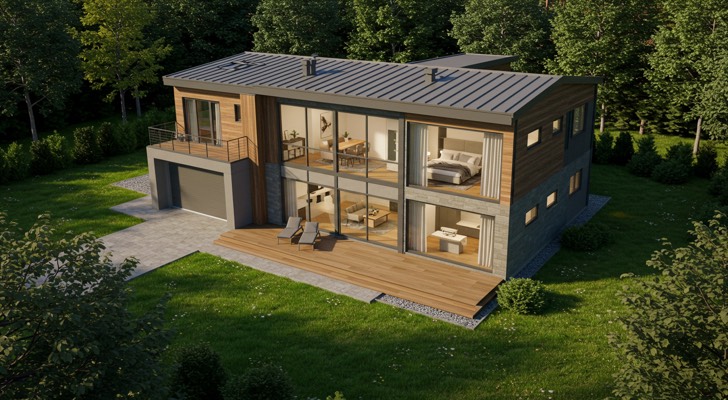Modular homes are revolutionizing the housing market by offering a cost-effective, efficient, and stylish alternative to traditional homes. With rising real estate prices and increasing demand for sustainable living, modular homes have become a popular choice for individuals and families seeking affordable and customizable housing solutions. This article explores what modular homes are, their benefits, costs, and why they are becoming a go-to option for modern living.

What Are Modular Homes?
Modular homes are prefabricated houses built in sections (or modules) in a factory setting. Once the modules are complete, they are transported to the home site and assembled on a permanent foundation. Unlike mobile or manufactured homes, modular homes meet the same building codes and standards as traditional stick-built homes, making them equally durable and safe.
The Benefits of Modular Homes
Modular homes offer several advantages over traditional housing. They are more affordable due to lower labor and material costs, making them a cost-effective option. The faster construction time—typically 8-12 weeks—allows homeowners to move in much sooner compared to traditional builds. Additionally, modular homes provide customization options, enabling buyers to choose from various floor plans, exterior finishes, and interior designs. Many models are also designed with energy efficiency in mind, featuring insulated windows, energy-efficient appliances, and solar panel options. Built in controlled factory environments, modular homes undergo strict quality control, ensuring precision and consistency.
Cost of Modular Homes
The cost of a modular home varies based on factors such as size, location, and customization. The base price for a modular home typically ranges from $50 to $100 per square foot, making a 1,500-square-foot home cost between $75,000 and $150,000. Additional expenses include land and site preparation, which can add $20,000 to $50,000, and utility connections, which may cost $10,000 to $30,000. Customization and upgrades, such as premium finishes or upgraded appliances, can add another $10,000 to $50,000. On average, a fully installed modular home costs between $150,000 and $400,000, making it a significantly more affordable option compared to traditional housing.
Financing Options for Modular Homes
Modular homes qualify for traditional mortgage financing, including conventional mortgages, FHA and VA loans, and construction loans. These options provide homeowners with competitive interest rates and flexible financing terms, making the process similar to purchasing a site-built home.
Design and Customization Trends
Modern modular homes have evolved far beyond the basic, boxy designs of the past. Today’s models feature open-concept layouts, maximizing space and creating a spacious feel. Floor-to-ceiling windows allow for abundant natural light, while smart home technology offers integrated systems for security, lighting, and temperature control. Many modular homes also use eco-friendly materials such as bamboo flooring, recycled steel, and solar panels, promoting sustainable living.
Potential Drawbacks of Modular Homes
While modular homes offer many benefits, there are some potential downsides. Land costs can significantly add to the overall expense, as you’ll need to purchase and prepare the land. Additionally, modular homes, while customizable, may offer fewer design options compared to custom-built homes. Finally, some buyers may still perceive modular homes as less desirable than traditional homes, which can impact resale value.
Why Modular Homes Are the Future of Housing
With rising construction costs and growing interest in sustainable living, modular homes are emerging as a practical and attractive solution. Their affordability, energy efficiency, and modern designs make them an appealing option for first-time homebuyers, retirees, and anyone seeking a streamlined and customizable living space.
Conclusion
Modular homes are redefining modern living by offering a simple, affordable, and stylish housing solution. With their cost-effectiveness, quick construction time, and energy-efficient features, they are becoming an increasingly popular choice in the USA. Whether you’re looking for a primary residence, vacation home, or rental property, modular homes offer a smart and flexible way to achieve homeownership without breaking the bank.
 © Copyright 2025 Shirabe-ru | Terms | Privacy Policy | Contact Us
© Copyright 2025 Shirabe-ru | Terms | Privacy Policy | Contact Us


